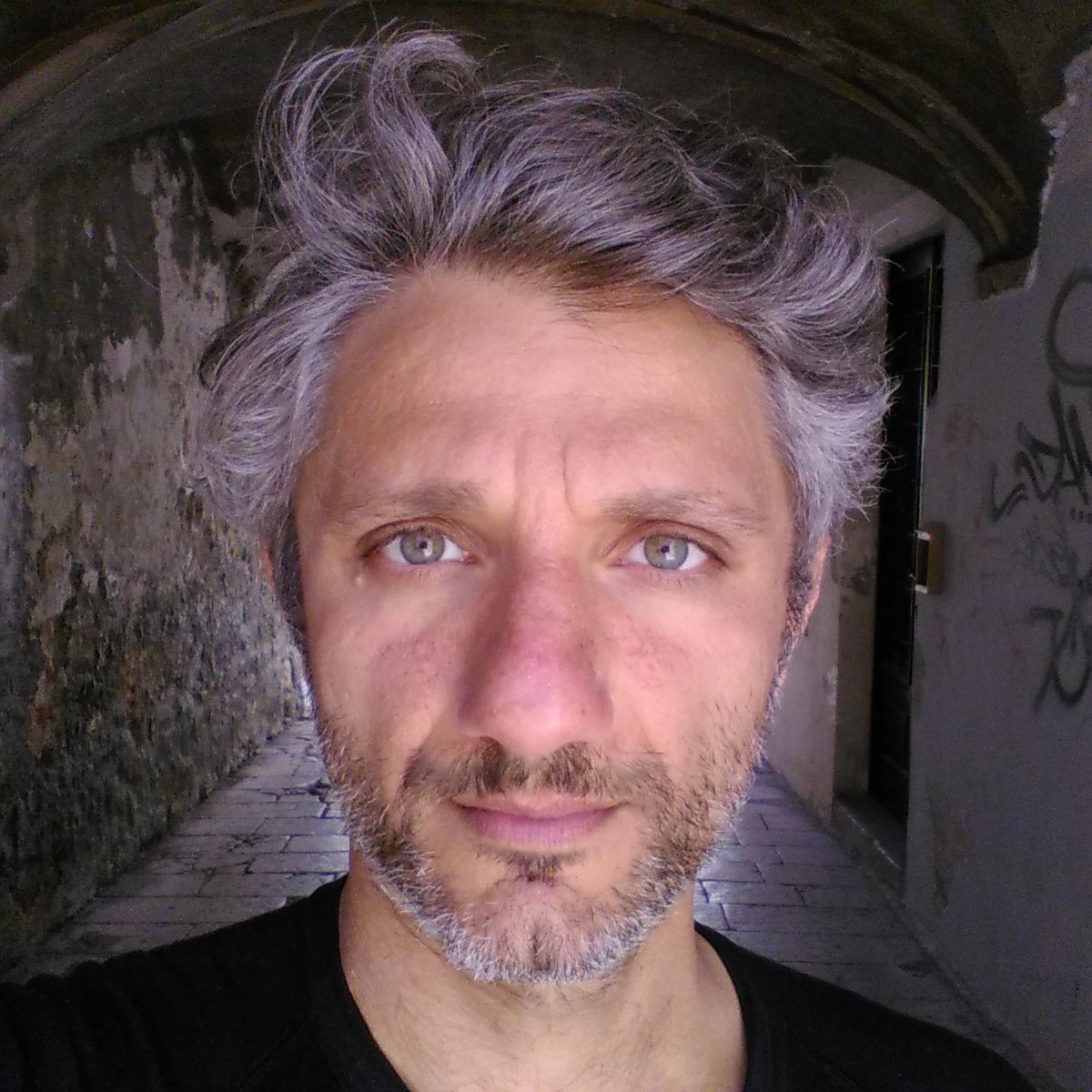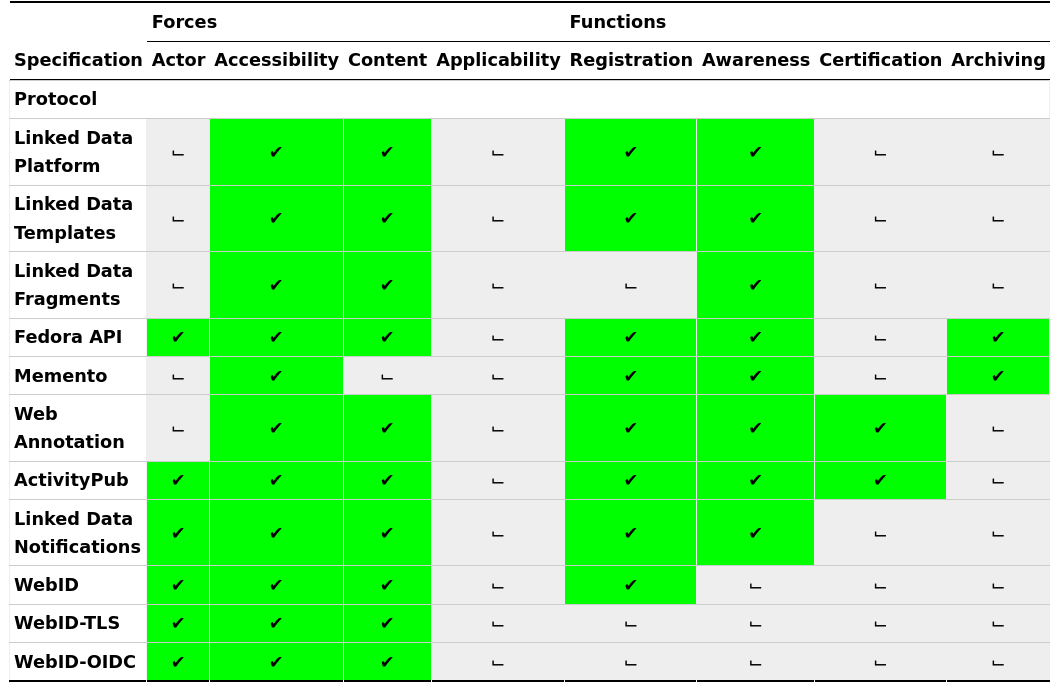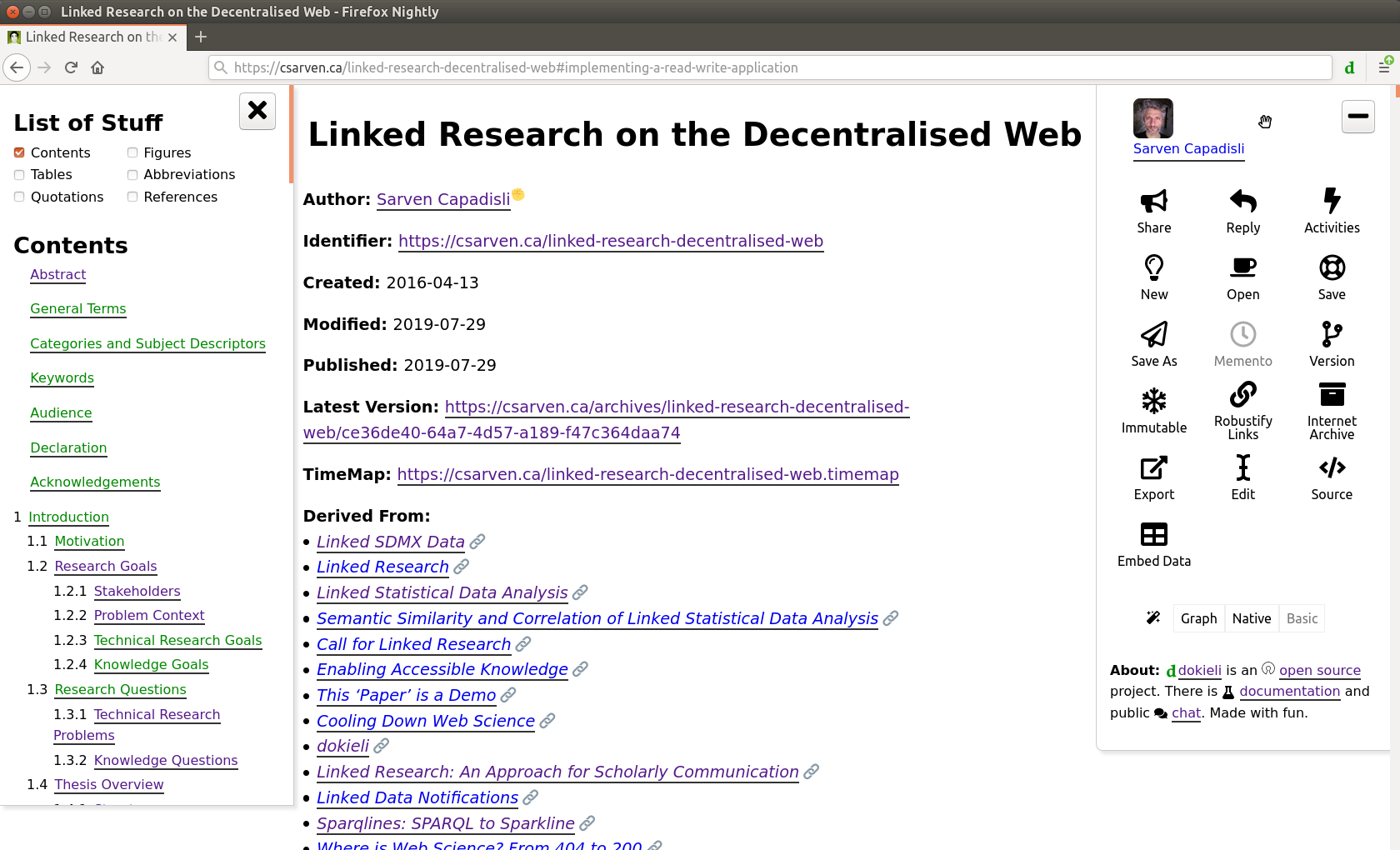Linked Research on the Decentralised Web
Linked Research on the Decentralised Web
Doctoral Colloquium , Bonn, 2020-03-03T09:00:00Z, #LinkedResearch
 Sarven Capadisli
https://csarven.ca/#i
@csarven
Sarven Capadisli
https://csarven.ca/#i
@csarven
Doctoral Colloquium
Scholarly communication is a complex sociotechnical ecosystem
Web; a social machine
Research Goals
Stakeholders
Stakeholders acting as external forces in scholarly communication:
- Research sponsors
- Knowledge workers
- The public
- The industry
Problem Context
Global deficiencies in scholarly communication:
Research Goals
- Technical Research Goals
- Create missing Web recommendations.
- Build an interoperable Web application for common scholarly activities.
- Knowledge Goals
- Identify constraints and limitations.
- Requirements to exchange human- and machine-readable units of information.
Research Questions
Technical Research Problems
Artifacts to (re)design, requirements to satisfy, stakeholders’ goals to achieve, and the problem context.
- Central Design Problem
- How can we design decentralised Web applications for information exchange in an open and decoupled scholarly communication ecosystem?
Technical Research Problems: Mechanisms
- Mechanisms
- What technical mechanisms, standards or protocols are necessary for decentralised information exchange on the Web? Which already exist and what is missing?
Technical Research Problems: Artifacts
- Artifacts
- How can Web technologies be employed to fulfill the core functions of scholarly communication in an open and interoperable way?
Knowledge Questions
- How can we situate scholarly communication using the Web with respect to technological communication mediums and scientific paradigms?
- What are the core components of scientific communication, how are they configured, and what are the effects of the interactions between them?
- What are contemporary practices around knowledge creation and dissemination, and how are communities working to improve these?
Scholarly Communication on the Web
Structure of Scholarly Information
Answers knowledge questions:
Structure of Scholarly Information: Contributions
Extensions to knowledge and design of technical artifacts.
Contributions on publishing and exchanging statistical Linked Data:
- Linked SDMX Data, Capadisli, Auer, Ngonga Ngomo, Semantic Web Journal, 2013
- Linked Statistical Data Analysis, Capadisli, Meroño-Peñuela, Auer, Riedl, ISWC SemStats, 2014
Decentralising Scholarly Communication
Decentralising Scholarly Communication: Contributions
Extensions to knowledge.
Contributions on common patterns on architectural designs, classification of specifications:
Linked Data Notifications
Answers technical research problems on how to design a decentralised notification protocol.
Contributions:
- Linked Data Notifications: a resource centric communication protocol, Capadisli, Guy, Lange, Auer, Sambra, Berners-Lee, ESWC (Best Student Paper Award) 2016
- Linked Data Notifications, Capadisli, Guy, W3C (Recommendation), 2017
Decentralised Linked Research Application
Answers technical research problems on how to design a decentralised application. Contributions:
- Linking the Decentralised Information Space
- Decentralised Authoring, Annotations and Notifications for a Read-Write Web with dokieli, Capadisli, Guy, Verborgh, Lange, Auer, Berners-Lee, ICWE Application, 2017
- Forces and Functions in dokieli
Linked Research
To enable creators and consumers of open knowledge, and generalisation of core principles to set a shift in scholarly communication.
Contributions:
Scientific Communication
- Forces
- Actor
- Content
- Accessibility
- Applicability
- Functions
- Registration
- Awareness
- Certification
- Archiving
Architecture of the Web
The core design components of the Web:
- Identification (URI)
- Interaction (HTTP)
- Data Formats (resource representations)
Architecture of the Web
- Axiom 0a: Universality 2
- Any resource of significance should be given a URI.
- Axiom 2b: identity
- the significance of identity for a given URI is determined by the person who owns the URI, who first determined what it points to.
WebID Profile
<https://csarven.ca/#i>a foaf:Person ;foaf:name "Sarven Capadisli"@en ;foaf:img <https://csarven.ca/media/images/sarven-capadisli.jpg> ;cert:key <https://csarven.ca/#key-e785> ;foaf:knows <https://www.w3.org/People/Berners-Lee/card#i> ;pim:storage <https://csarven.ca/> ;ldp:inbox <https://csarven.ca/inbox/> ;as:outbox <https://csarven.ca/outbox/> .
Linked Statistical Data Cloud
Linked Statistical Data Analysis

Typical centralised and decentralised architectures
Degree of control for identifiers, data, and applications
Forces and Functions in Specifications


W3C Linked Data Notifications design principles
Data on the Web should not be locked in to particular systems or be only readable by the applications which created it. Users should be free to switch between applications and share data between them.
W3C Linked Data Notifications overview
Linking the Decentralised Information Space
Implementing a Read-Write Application
dokieli is a clientside editor for decentralised article publishing, annotations and social interactions.

Implementing a Read-Write Application: Core Concepts
Implementing a Read-Write Application: Core Mechanisms
Implementing a Read-Write Application: Core Artifacts
Forces in dokieli
- Actor
- Any web agent — person or software — can use WebIDs.
- Content
- Actors can author, publish, and reuse Linked Data resources.
- Accessibility
- Actors can access representations of access controlled Web resources.
- Applicability
- Expressibility and sharing units of information re applicability.
Functions in dokieli
- Registration
- Articles, annotations, and notifications can be assigned HTTP URIs.
- Awareness
- Notifications to document, profile, or community managed inboxes.
- Certification
- Units of information at any level of granularity can be annotated.
- Archiving
- Informing of archiving systems. Robust citations.
Linked Research: Design Principles
- Autonomy
- Actors without technical constraints on how they communicate.
- Universal access
- Any agent accessing and interacting with different systems.
Self-publishing
Self-publishing entails that an actor can register identifiers for their content, shape and store data where they have access to, set access control policies, and use preferred applications to achieve them.
Linked Open Research Cloud
Notifications about scholarly activities (articles, annotations, citations..)
- A notification MUST conform to one of the specified data shapes;
- MUST refer to Linked Data resources;
- MUST refer to free and publicly accessible resources.
Conclusions
Research Questions Review: Mechanisms
- What technical mechanisms, standards or protocols can be employed for decentralised information exchange on the Web?
- Linked Data Notifications: affords high degree of controls to actors;
- triggers registration, fulfills awareness, supports certification and archiving.
Research Questions Review: Artifacts
- How can Web technologies be employed to fulfill the core functions of scholarly communication in an open and interoperable way?
- dokieli: enable actors to reach a high degree of control over their creations and social activities;
- operates under a scholarly ecosystem where applications are decoupled to fulfill registration, awareness, certification, and archiving.
Interpretations
Perspectives
#LinkedResearch on the Decentralised Web
So there we have it. It is all sort of simple.